Why is the White Part of the Eye Swollen like Jelly?
If you’ve noticed the white part of your eye looking swollen and jelly-like, you’re not alone. This condition, known as chemosis, is more common than you might think and can be caused by a variety of factors. Allergies, eye infections, or even thyroid issues can lead to this unusual swelling.
Allergies happen when your immune system overreacts to something harmless, like pollen or pet dander. Springtime can be especially tough on your eyes, thanks to blooming flowers, tree pollen, and ragweed. These allergens can leave you dealing with sneezing, itchy eyes, and that dreaded red, puffy look. On top of that, allergies, along with conditions like pink eye, thyroid disease, or ocular surface issues, can lead to that jelly-like swelling in the white part of your eye.
While it might look alarming, understanding what causes chemosis and how to treat it can help ease your concerns. Let’s break it down so you know what to expect and when to seek help.
Key Points
- Chemosis is swelling (edema) of the conjunctiva.
- The conjunctive appears like a jelly-like blister due to excess fluid.
- Causes of chemosis include ocular surface trauma, infection, allergy, and thyroid eye disease.
What is Chemosis?
Chemosis is swelling or edema of the white part of the eye. The conjunctiva, or front surface of the eye, appears like a jelly-like blister due to excess fluid. It will often clear on its own or after treatment of the underlying condition.1 Chemosis is caused by a direct insult to conjunctival endothelial cells.2 In some cases, this inflammation can cause bleeding.
Understanding Chemosis
Chemosis is common and can be caused by a number of conditions including trauma, infection, allergy, obstruction of lymphatic and venous outflow, and inflammation of the conjunctiva.3 Common eye conditions that cause chemosis include: allergic conjunctivitis, viral conjunctivitis and bacterial conjunctivitis. Conjunctival chemosis can also result from thyroid eye disease and ocular surface exposure.
Viral conjunctivitis
Viral conjunctivitis is one of the most common conditions in eye practices and emergency rooms. Often referred to as “pink eye,” viral conjunctivitis is an inflammation of the conjunctiva—the clear tissue covering the white part of the eye and lining the inner surface of the eyelid. This condition is typically caused by viruses, most commonly adenoviruses. Other viruses that can lead to viral conjunctivitis include herpes simplex virus, varicella-zoster virus, and picornaviruses.
Viral conjunctivitis is a benign condition that can resolve on its own without specific medical treatment. However, it can be highly contagious and can spread through direct or indirect contact with the eye secretions of an infected person.4
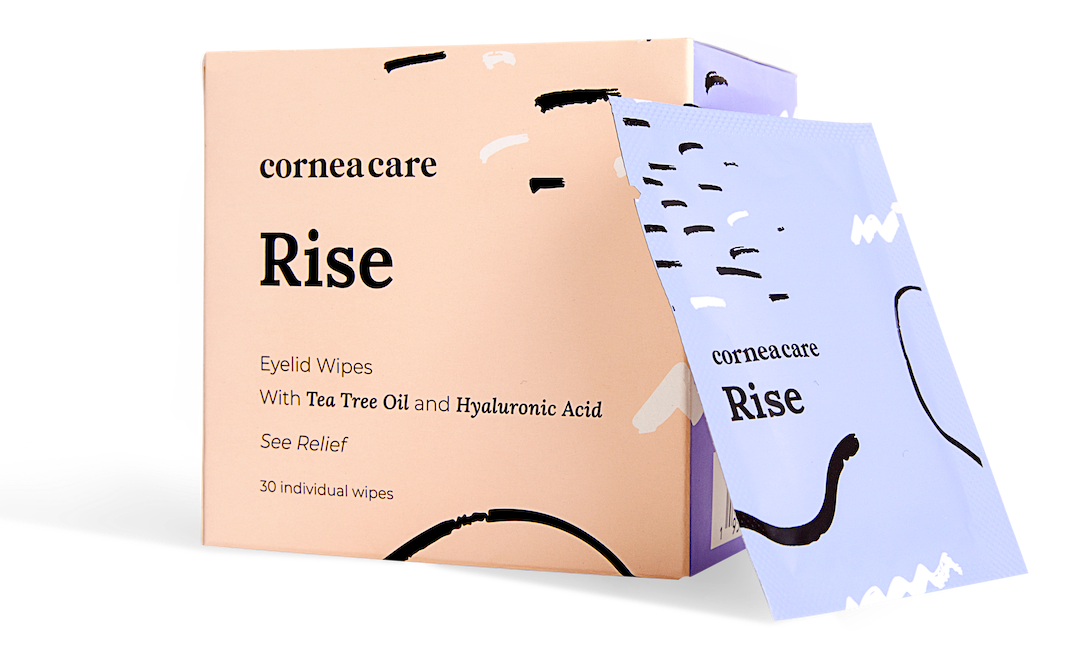
Rise
Eyelid Wipes
Perfect for eye dryness, itching, burning, and crusting/flaking of eyelashes. Free shipping 📦
Try today - $25
Bacterial Conjunctivitis
A bacterial conjunctivitis presents with thick, yellow or green discharge, or sticky eyes when you wake up, foreign body sensation and conjunctival injection (pink eye). Conjunctival chemosis is also possible. The affected eye or eyes typically appear red or pink due to inflammation. Your eye doctor will conduct an eye exam to make a diagnosis.
Bacterial conjunctivitis is caused by bacterial infections, most often Staphylococcus aureus, Streptococcus pneumoniae, and Haemophilus influenzae.5 Bacterial conjunctivitis is more common in individuals with other eye conditions or those with compromised immune systems.
Allergic Conjunctivitis
Allergic conjunctivitis has become more common in both children and adults and has a significant effect on quality of life. It affects approximately 10 to 20% of the population. Allergic conjunctivitis is a group of diseases caused by an ocular response to environmental allergens. Allergic conjunctivitis may be seasonal or perennial. Exposure to an allergen like pet dander can also be the cause. The symptoms of an allergic reaction may include itching, watery discharge, foreign body sensation, redness, and a papillary response on the eyelids.4,6
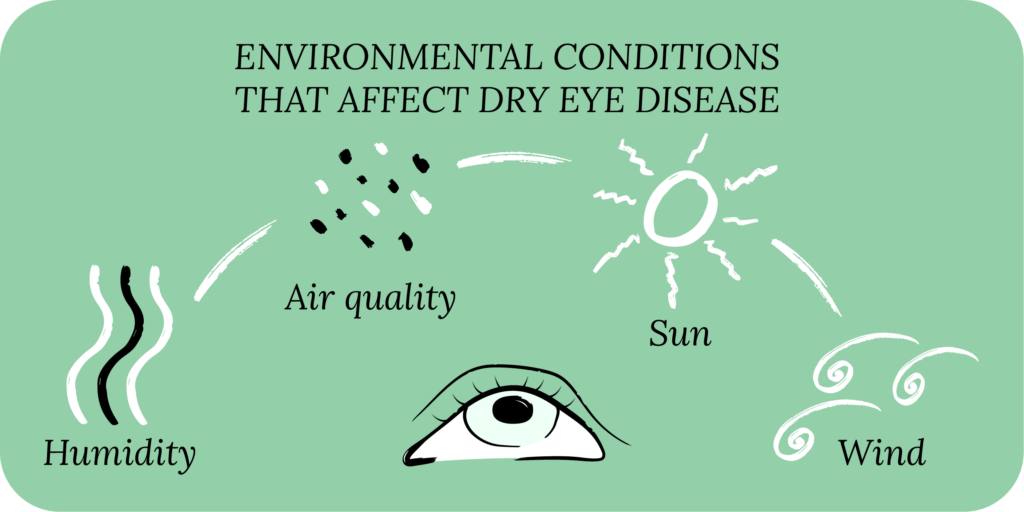
Thyroid Eye Disease
Thyroid Eye Disease (TED), also known as Graves’ ophthalmopathy or Graves’ orbitopathy, is an autoimmune condition that primarily affects the eyes. It is often associated with an overactive thyroid (hyperthyroidism). It occurs when the immune system attacks the tissues surrounding the eyes, leading to inflammation and other eye-related symptoms.
TED can cause a range of symptoms, including redness, swelling, and a gritty sensation in the eyes. Patients may also experience pain or pressure behind the eyes.7
One of the features of TED is proptosis, where the eyes bulge forward. This occurs due to inflammation and swelling of the muscles and tissues behind the eyes. Chemosis is a common finding in thyroid eye disease. It contributes to the appearance of bulging eyes and may cause a jelly-like swelling in the white part of the eyes.7
Ocular Surface Exposure
Dryness of the conjunctiva due to ocular surface exposure is one of the major causes of conjunctival chemosis. When the eyelids don’t close properly, it can expose the surface of the eye. This happens in conditions like lagophthalmos, Bell’s palsy, or thyroid eye disease.
Symptoms of Chemosis
Individuals with chemosis often have other clinical signs and ocular symptoms including:
- Irritated eye
- Broken blood vessels
- Pink eye (conjunctivitis)
- Itchy eyes
- Red eyes
- Excessive tearing
- Swollen eyelids
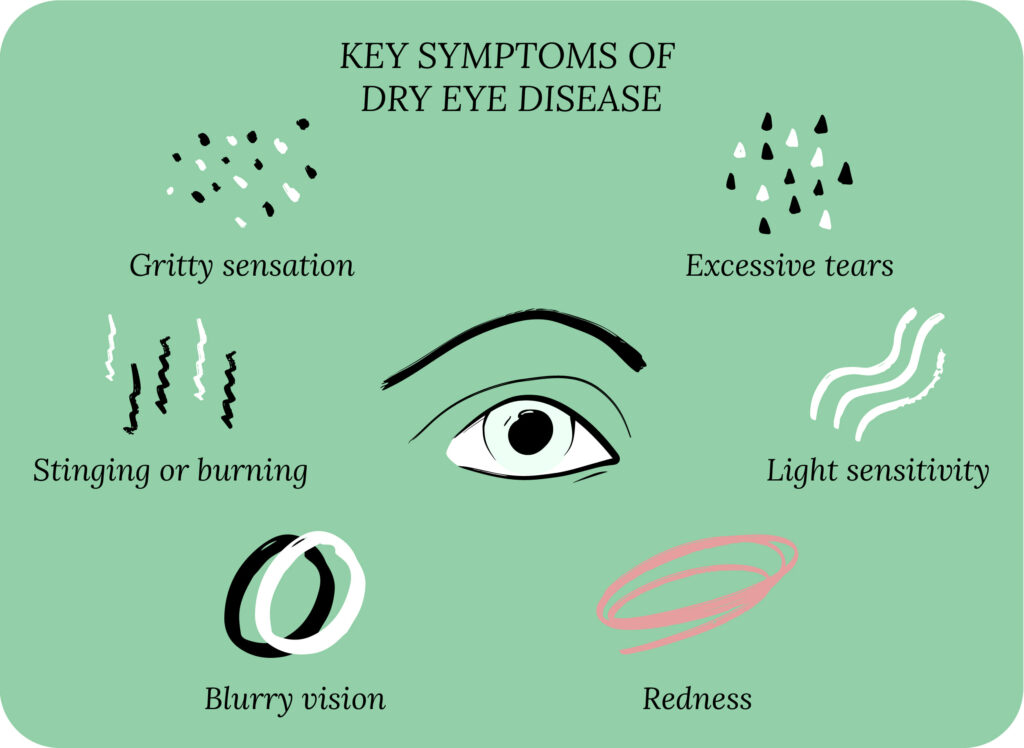
Treatments for Chemosis
The treatment for chemosis depends on the cause. You should seek medical advice from your eye doctor (optometrist or ophthalmologist). You should stop wearing contact lenses during treatment.
In cases of bacterial conjunctivitis, your eye doctor may recommend antibacterial eye drops or ointment.5
Viral conjunctivitis will resolve on its own within 7 to 14 days. For most cases, no effective treatment is currently available, and treatment is focused on symptom relief. You may find that CorneaCare cold compresses and artificial tears help. For severe cases, topical corticosteroid drops can offer relief of swelling symptoms in severe cases. However, prolonged use of corticosteroids can increase the risk of glaucoma and cataracts.4
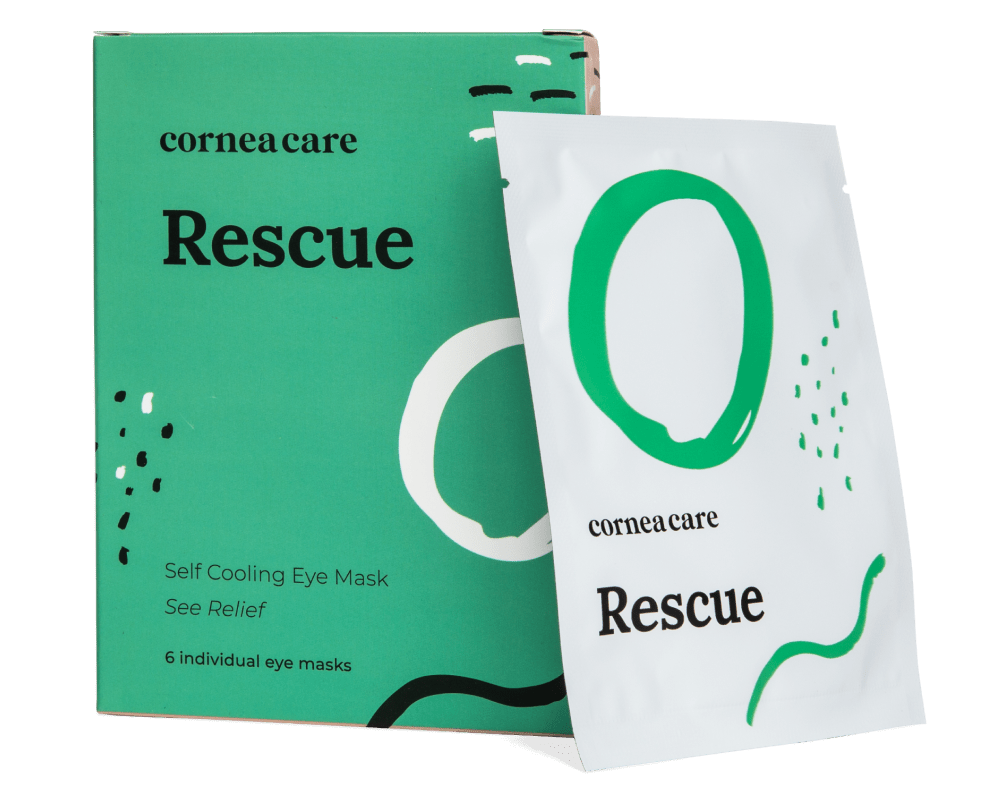
Rescue
Cold Compresses
Perfect for sudden flare-ups of eye dryness, pain, burning, and swollen/inflamed eyelids. Free shipping 📦.
Try today - $12
Treatment for allergic conjunctivitis may include oral or topical antihistamines, cool compresses, and eye drops like over-the-counter artificial tears. Your eye doctor may treat severe cases with a steroid eye drop.6
White Part of the Eye Swollen like Jelly FAQ
Swelling of the white part of the eye, known as chemosis, can be caused by various factors such as allergic reactions, infections, irritants, or underlying eye conditions. It’s important to consult with an eye care professional for a proper diagnosis based on your specific symptoms and medical history.
Chemosis may or may not be an emergency, depending on the severity and accompanying symptoms. Severe cases, sudden onset, or if it’s associated with other concerning symptoms like vision changes, pain, or discharge, should be considered urgent, and you should seek prompt medical attention. Mild cases might be managed with home care, but a professional evaluation is best.
There are a few quick things you can do to alleviate chemosis. Applying a cold compress, such as a wet cloth or ice pack, gently on the affected eye can help. Avoid irritants that could worsen the swelling, such as smoke or strong chemicals. Use lubricating eye drops, specifically artificial tears, to soothe the eye and reduce irritation. If symptoms persist or worsen, see your eye doctor for a proper diagnosis and treatment.
Putting It All Together
Chemosis might cause worry, but it’s usually just a sign that something else is going on with your eyes. Whether it’s allergies, pink eye, thyroid issues, or another underlying condition, addressing the cause is key to clearing up that jelly-like swelling. In many cases, chemosis gets better on its own or with a little help from your eye doctor.
Need some extra relief? Cornea Care’s self-cooling hydrogel cold compresses can help soothe swollen, uncomfortable eyes while you heal.
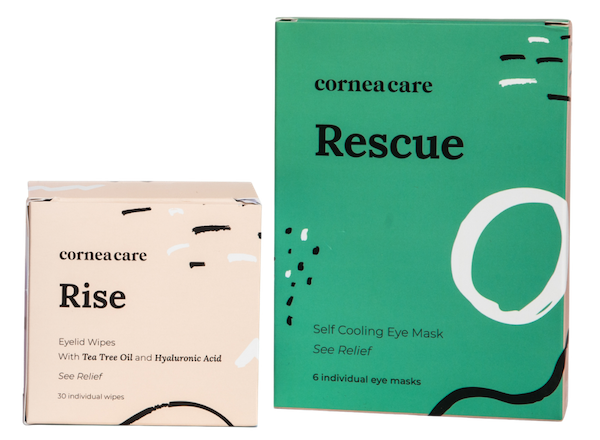
Starter
Eyelid Hygiene Plan 1
Perfect for eye dryness, burning, itching, pain, crusting/flaking of eyelashes and inflamed eyelids. Free shipping 📦.
Try today - $35
What’s Next
Learn to love your eyes! Read more eye health and wellness tips on our blog.




